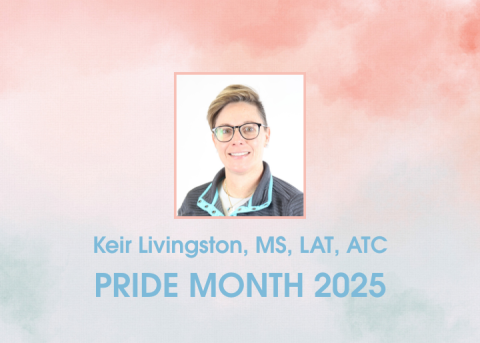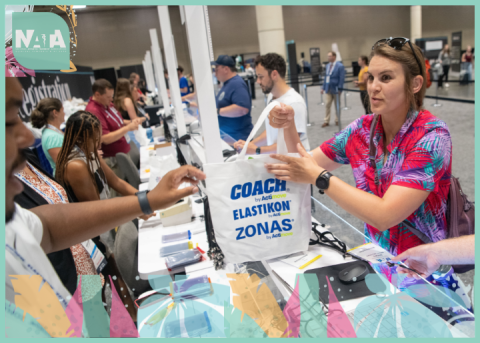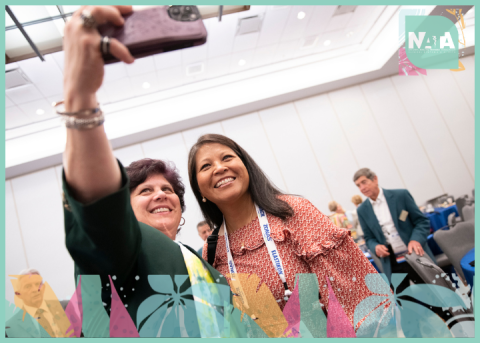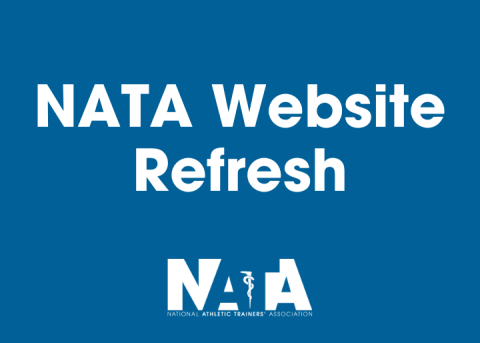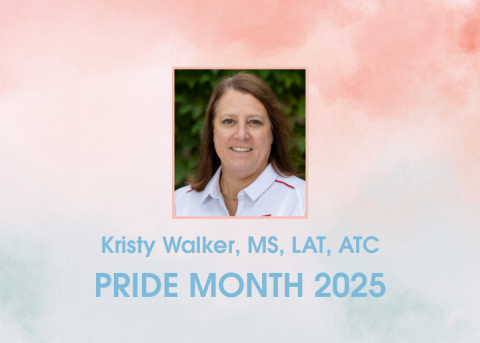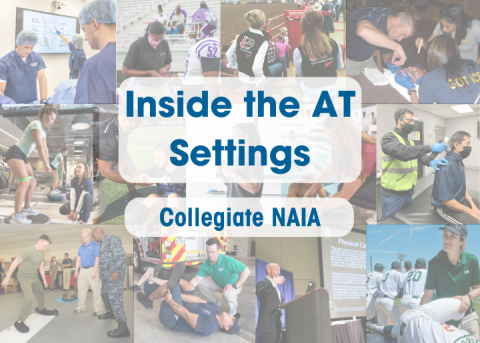
Introduced in the April NATA News, this NATA Now article series provides insight into the different athletic training settings as well as information athletic training students and interested ATs need to know. The series also provides tips from members on how to succeed in each setting.
Jesse Chavez, EdD, LAT, ATC, head athletic trainer at Lindsey Wilson College, has been in
the collegiate setting for 12 years. Chavez said his volunteer and networking opportunities in the athletic training research world connected him to intercollegiate athletics.
“Moreover, professional relationships with former athletes and coaches have kept many opportunities open for me and the students I mentor,” he said.
Read on as Chavez shares insight from the National Association of Intercollegiate Athletic (NAIA) setting.
Typical Makeup of Your Population
18- to 25-year-old athletes but because our school is such a tight knit school, I have worked on ladies and gentlemen in our physical plant and dining services, all the way up to our College’s President and Vice Presidents. Also, participants in research can vary, depending on the research topic and study being performed.
Non-AT-Related Skills/Education/Certification Required or Helpful for Your Setting
One of the biggest skills I have learned to use is empathy; athletic trainer run on to the field and see an athlete on the possible worse day of their lives, and they are injured and scared about what happens next. So, a calming voice, a goofy smile and an open ear can make the biggest difference to them in that time.
Also, learning not scared of the word “no” in a professional setting; No is just a two-letter word that shouldn’t hold much weight for Athletic Training Professionals; “Yes” and “Maybe” mean so much more, and can lead to so many different opportunities; those should mean more.
Common Injuries Observed or Encountered in Your Setting
My staff and I have been using skills in psychology a lot more due to the complexity of injuries, both physiological and psychological. ATs need to be able to “treat” both the physical symptoms that appear from injuries and recognize the psychological and emotional symptoms that can appear and be able to support and refer when needed.
Traits of a Successful AT in Your Setting
Adaptability, flexibility, empathy, creativity, honesty and truthfulness
Misconceptions About Your Setting and/or Patient Population
The competitiveness of the NAIA versus the other collegiate settings (NCAA, NJCCA, etc.). Teams I have worked with in the NAIA have competed with athletes from all collegiate levels and professional levels and have held their own against them. We should look at collegiate athletics as a whole, not as separate organizations where one is better than the other.
Balancing student life and athletics is a lot more complex than it has been in the past, and as a dual AT and educator, it is important to support all aspects of the student athlete experience. Research in athletic training and sports medicine can lead to different opportunities that may not be known. Simply asking or reaching out to a setting that you would like to work in can start a conversation that can lead to something.

